Spectrum Summary: Peasant Movements 1857-1947 - UPSC PDF Download
Peasants Under Colonialism
The impoverishment of the Indian peasantry resulted from colonial economic policies, handicraft decline, a new land revenue system, and the impact of the colonial administrative and judicial systems.
Peasants faced a myriad of challenges, including high rents, illegal levies, and unpaid labor in zamindari areas. In Ryotwari areas, the burden intensified with heavy government-imposed land revenue.
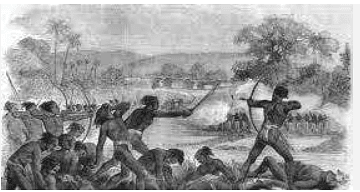 Rural Life and Society
Rural Life and Society
Fearing the loss of livelihood, peasants sought financial assistance from local moneylenders. However, these moneylenders exploited their vulnerabilities, imposing exorbitant interest rates and often leading to the mortgage of land and cattle.
The consequence was a significant shift in the status of peasants from actual cultivators to tenants-at-will, sharecroppers, or landless laborers.
Peasants identified the colonial state as their primary adversary, realizing that it was the root cause of their exploitation and hardships.
In response to intolerable conditions, some peasants resorted to desperate measures, engaging in criminal activities such as robbery, dacoity, and what is known as social banditry.
A Survey of Early Peasant Movements
Indigo Revolt (1859-60)
In Bengal, European indigo planters exploited local peasants by compelling them to cultivate indigo instead of more lucrative crops like rice.
Peasants were coerced into taking advance sums and entering deceptive contracts, which were later used against them.
The planters employed various intimidation tactics, including kidnappings, illegal confinements, flogging, attacks on women and children, seizure of cattle, and the destruction of homes and crops.
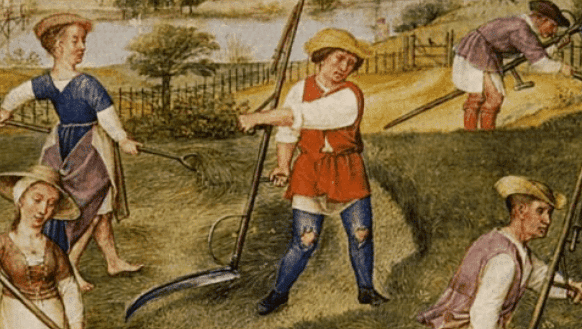 Medieval Peasants
Medieval Peasants
In 1859, led by figures like Digambar Biswas and Bishnu Biswas in Nadia district, peasants collectively resisted growing indigo under duress.
They faced physical pressure from planters, their armed retainers (lathiyals), and support from the police and the courts.
Peasants organized a counterforce to resist the planters' attacks.
In response to the planters' control efforts, ryots employed tactics such as rent strikes, refusing to pay enhanced rents, and physically resisting eviction attempts.
Over time, the peasants acquired knowledge of legal mechanisms and initiated legal actions, supported by fund collections, to protect their rights.
Pabna Agrarian Leagues
During the 1870s and 1880s, extensive regions of Eastern Bengal experienced agrarian unrest due to oppressive practices by zamindars.
Zamindars imposed rents beyond legal limits and obstructed tenants from acquiring occupancy rights under Act X of 1859.
To achieve their goals, zamindars employed forcible evictions, seizure of cattle and crops, and prolonged, costly litigation in which poor peasants found themselves at a disadvantage.
Responding to the oppressive regime, peasants in Yusufshahi Pargana, Patna district, formed an agrarian league to resist zamindars' demands.
The league organized a rent strike, with ryots refusing to pay enhanced rents and challenging zamindars in courts.
Ryots raised funds to fight court cases, and the struggle spread throughout Patna and other districts of East Bengal.
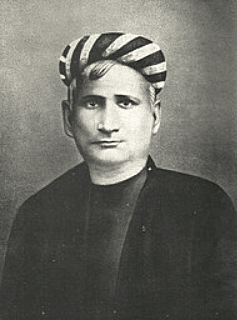 Bankim Chandra Chatterjee
Bankim Chandra Chatterjee
The primary form of resistance was legal, with minimal violence reported.
Despite lingering discontent until 1885, most cases were resolved, partly through official persuasion and zamindars' fears.
Many peasants acquired occupancy rights and resisted enhanced rents. The government pledged to legislate to protect tenants from zamindari oppression.
In 1885, the Bengal Tenancy Act was enacted.
Young Indian intellectuals, including Bankim Chandra Chatterjee, R.C. Dutt, and the Indian Association under Surendranath Banerjea, supported the peasants' cause.
Deccan Riots
In the Deccan region of western India, the ryots suffered heavy taxation under the Ryotwari system, creating a vicious network where moneylenders served as exploiters and primary beneficiaries.
The moneylenders, mostly outsiders such as Marwaris or Gujaratis, exacerbated conditions worsened by a crash in cotton prices post the American Civil War in 1864, the government's decision to raise land revenue by 50% in 1867, and successive bad harvests.
In 1874, escalating tensions between moneylenders and peasants led to a social boycott movement organized by ryots against "outsider" moneylenders.
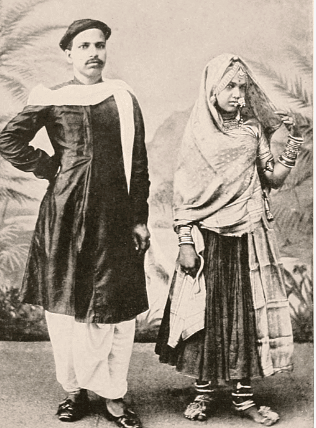 Marwaris
Marwaris
During the social boycott, ryots refused to buy from moneylenders' shops, neglected cultivation in their fields, and garnered support from barbers, washermen, and shoemakers who refused to serve the moneylenders.
The social boycott swiftly spread to villages in Poona, Ahmednagar, Sholapur, and Satara. Eventually, it transformed into agrarian riots marked by systematic attacks on moneylenders' houses and shops.
During these riots, debt bonds and deeds were seized and publicly burnt by the peasants.
The government successfully repressed the movement, prompting the passage of the Deccan Agriculturists Relief Act in 1879 as a conciliatory measure.
The modern nationalist intelligentsia of Maharashtra supported the peasants' cause during this time as well.
Changed Nature of Movements After 1857
- Peasants took center stage in agrarian movements, advocating directly for their demands.
- Economic issues were the primary focus of these demands.
- Movements targeted immediate adversaries, including foreign planters and indigenous zamindars and moneylenders.
- Struggles were specific, addressing particular grievances, rather than seeking broad objectives.
- Colonialism was not the primary aim of these movements.
- The goal wasn't to end the system of subordination or exploitation of peasants.
- The territorial impact of these movements was limited.
- There was a lack of sustained continuity in the struggle and organization.
- Peasants developed a heightened awareness of their legal rights, actively asserting them within and outside the legal system.
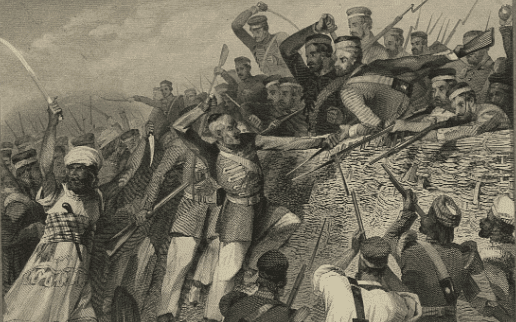
Weaknesses
- A lack of an adequate understanding of colonialism.
- 19th-century peasants did not possess a new ideology and a new social, economic, and political program.
- These struggles, however militant, occurred within the framework of the old societal order lacking a positive conception of an alternative society.
Later Movements
The Kisan Sabha Movement
After the 1857 revolt, the Awadh taluqdars regained their lands, reinforcing their control over the agrarian society. The majority of cultivators faced high rents, summary evictions, illegal levies, and renewal fees, exacerbated by the post-World War I rise in prices.
In UP, kisan sabhas emerged, organized largely due to Home Rule activists. The United Provinces Kisan Sabha, founded in February 1918 by Gauri Shankar Mishra and Indra Narayan Dwivedi, gained support from leaders like Madan Mohan Malaviya. By June 1919, it had 450 branches, with notable figures including Jhinguri Singh, Durgapal Singh, and Baba Ramchandra.
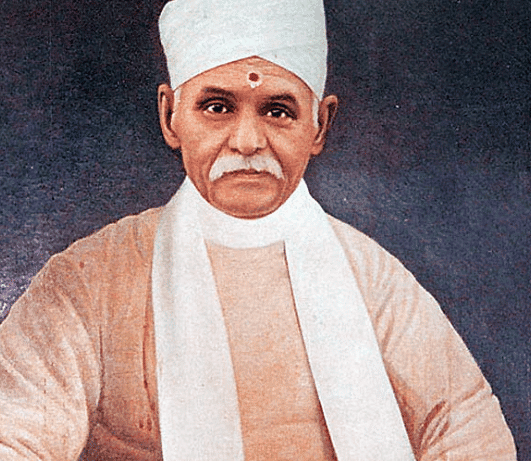 Madan Mohan MalaviyaIn June 1920, Awadh Kisan Sabha was formed due to nationalist differences, advocating for kisans to resist bedakhali land tillage, reject hari and begar, boycott non-compliant individuals, and resolve disputes through panchayats.
Madan Mohan MalaviyaIn June 1920, Awadh Kisan Sabha was formed due to nationalist differences, advocating for kisans to resist bedakhali land tillage, reject hari and begar, boycott non-compliant individuals, and resolve disputes through panchayats.
Activity patterns shifted in January 1921 from mass meetings to looting bazaars, houses, granaries, and clashes with the police, primarily in Rai Bareilly, Faizabad, and Sultanpur districts. The movement declined due to government repression and the Awadh Rent (Amendment) Act's passing.
Eka Movement
- The end of 1921 saw a resurgence of peasant discontent in northern districts (Hardoi, Bahraich, Sitapur) of the United Provinces.
- Issues included:
- High rents: 50% higher than recorded rates.
- Oppression of thikadars: In charge of revenue collection.
- Practice of share-rents.
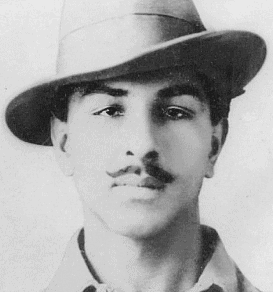 Madari Pasi
Madari Pasi
- Eka or Unity Movement meetings involved symbolic religious rituals where peasants vowed to:
- Pay only recorded rent on time.
- Not leave when evicted.
- Refuse forced labor.
- Give no help to criminals.
- Abide by panchayat decisions.
- Grassroot leadership from low-caste leaders like Madari Pasi and small zamindars.
- By March 1922, severe authorities' repression led to the movement's end.
Mappila Revolt
- Mappilas: Muslim tenants in Malabar facing oppression from mainly Hindu landlords.
- 19th-century grievances: lack of tenure security, high rents, renewal fees, and oppressive exactions.
- The Mappila movement merged with the Khilafat agitation encouraged by the local Congress demand for legislation on tenant-landlord relations.
- Leaders like Gandhi, Shaukat Ali, and Maulana Azad addressed Mappila meetings during the Khilafat-Non-Cooperation Movement.
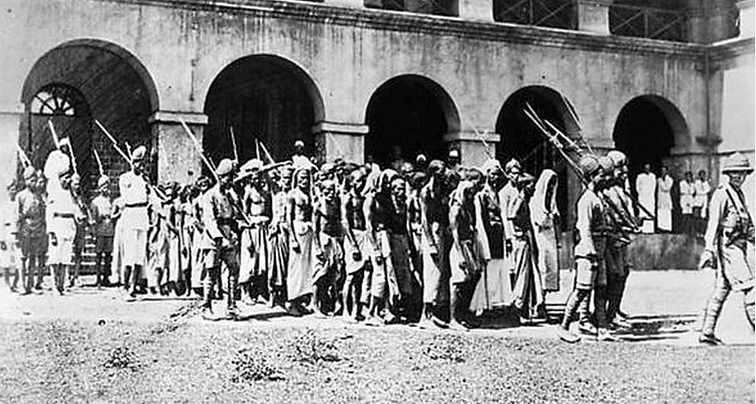 Mappila Revolt
Mappila Revolt
- August 1921: Arrest of respected priest leader Ali Musaliar triggering large-scale riots.
- Initially targeting symbols of British authority and unpopular landlords.
- Change in rebellion character with the declaration of martial law.
- Communal overtones emerged as Mappilas perceived some Hindus aiding authorities, isolating them from the Khilafat-Non-Cooperation Movement.
- By December 1921, all resistance ceased
Bardoli Satyagraha
- Bardoli taluqa in Surat district became highly politicized after Gandhi entered national politics.
- The movement was initiated in January 1926 due to a 30% increase in land revenue; protested by Congress leaders.
- Bardoli Inquiry Committee deemed the revenue hike unjustified; in February 1926, Vallabhbhai Patel took charge.
- Under Patel, Bardoli peasants refused payments until an independent tribunal was appointed or the existing amount was accepted as full payment.
- Patel organized the movement with 13 workers' camps and Bardoli Satyagraha Patrika to mobilize public opinion.
- Emphasis on women's mobilization; K.M. Munshi and Lalji Naranji resigned from the Bombay Legislative Council in support.
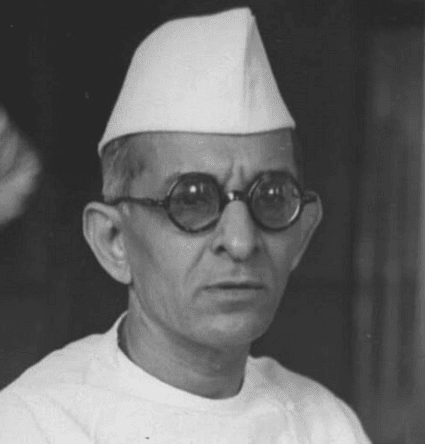 K.M. Munshi
K.M. Munshi
- By August 1928, tension escalated, and Gandhi arrived in Bardoli for potential emergencies.
- The government sought a graceful withdrawal, conditioning payment of enhanced rent by all occupants (not executed).
- The committee found the revenue hike unjustified, recommending a 6.03% increase.
- In the 1930s, peasant awakening was influenced by the Great Depression and the Civil Disobedience Movement, taking the form of a no-rent, no-revenue movement.
- After the decline of the active phase movement in 1932, new entrants to active politics sought outlets for their energies, turning to peasant organizations.
The All India Kisan Congress/Sabha
- This Sabha was founded in Lucknow in April 1936 with Swami Sahjanand Saraswati as president and N.G. Ranga as general secretary.
- Kisan manifesto issued; periodical started under Indulal Yagnik.
- AIKS and Congress sessions were held in Faizpur in 1936.
- Congress's manifesto for the 1937 provincial elections, especially the agrarian policy, was strongly influenced by the AIKS agenda.
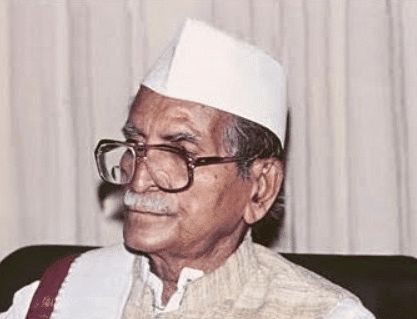 N.G. Ranga
N.G. Ranga
Under Congress Ministries
- The period from 1937 to 1939 marked the peak of peasant movements and activity during the Congress provincial rule.
- The primary mode of mobilization involved conducting kisan conferences and meetings where demands were voiced and resolutions were passed.
- Mobilization campaigns were extensively carried out in villages to engage and involve the rural population.
Peasant Activity in Provinces
Peasant Activity in Provinces
Peasant Activity in Provinces
Kerela
- In the Malabar region, Congress Socialist Party activists played a crucial role in mobilizing peasants.
- Numerous "Karshak Sanghams" or peasants' organizations were established.
- A prevalent method involved organizing marches, known as "jaths," where groups of peasants approached landlords to secure acceptance of their demands.
- A notable campaign occurred in 1938, where peasants advocated for the amendment of the Malabar Tenancy Act, 1929.
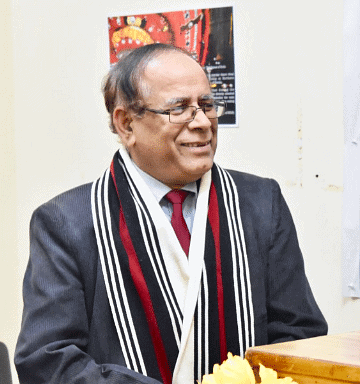 P.C. Joshi,
P.C. Joshi,
Andhra
- The region experienced a decline in the status of zamindars following their defeat by Congressmen in elections.
- Ongoing anti-zamindar movements were observed in various places.
- Several provincial ryot associations were actively engaged.
- In 1933, N.G. Ranga established the India Peasants’ Institute.
- From 1936 onward, Congress socialists initiated the organization of peasants.
- Summer schools of economics and politics were conducted in many places, featuring leaders like P.C. Joshi, Ajoy Ghosh, and R.D. Bhardwaj.
Bihar
- Sahjanand Saraswati was accompanied by notable figures like Karyanand Sharma, Yadunandan Sharma, Rahul Sankritayan, Panchanan Sharma, Jamun Karjiti, etc.
- In 1935, the Provincial Kisan Conference embraced the anti-zamindari slogan.
- A rift emerged between the Provincial Kisan Sabha and the Congress over the 'bakasht land' issue due to an unacceptable government resolution.
- The movement dissipated by August 1939.
Punjab
- Earlier peasant mobilization in this region was orchestrated by the Punjab Naujawan Bharat Sabha, Kirti Kisan Party, Congress, and the Akalis.
- A new direction was provided by the Punjab Kisan Committee in 1937.
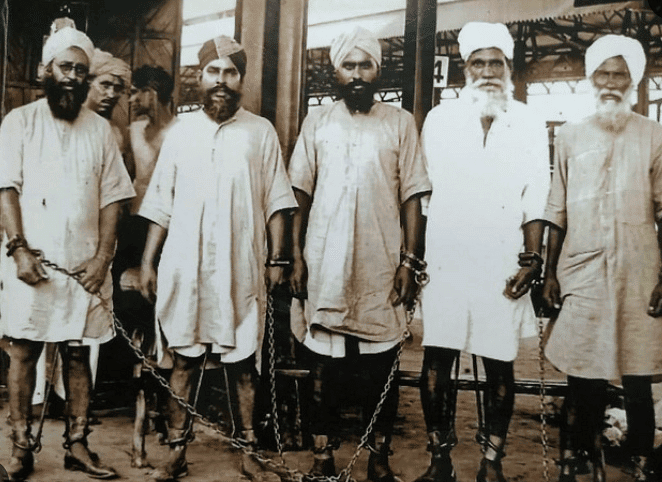 Punjab Kisan Committee in 1937
Punjab Kisan Committee in 1937
- The primary targets were the landlords of western Punjab, who held sway over the unionist ministry.
- Immediate issues included the resettlement of land revenue in Amritsar and Lahore, and increased water rates in the canal colonies of Multan and Montgomery, where feudal levies were demanded by private contractors.
- Peasants initiated a strike and ultimately secured concessions.
- Peasant activity in Punjab was concentrated mainly in Jullundur, Amritsar, Hoshiarpur, Lyallpur, and Shekhupura.
- Muslim tenants-at-will in West Punjab and Hindu peasants in south-eastern Punjab (today's Haryana) were largely unaffected.
- Peasant activity was also organized in Bengal (Burdwan and 24 Parganas), Assam (Surma Valley), Orissa, Central Provinces, and NWFP.
During the War
- Due to the adoption of a pro-war stance by the communists, the AIKS underwent a division along communist and non-communist lines.
- Many esteemed leaders such as Sahjanand, Indulal Yagnik, and N.G. Ranga departed from the sabha.
- Despite this division, the Kisan Sabha persisted in its work among the people.
- Notably, it played a commendable role during the famine of 1943.
Post-War Phase
Tebhaga Movement
- In September 1946, the Bengal Provincial Kisan Sabha issued a call for the mass implementation of the Flood Commission recommendations on tebhaga.
- The tebhaga system proposed a two-thirds' share for bargardars, the share-croppers (bagchasi or adhyar), instead of the existing one-half share.
- Bargardars typically worked on lands rented from the jotedars.
- Communist cadres, including urban student militias, ventured into the countryside to organize the bargardars.
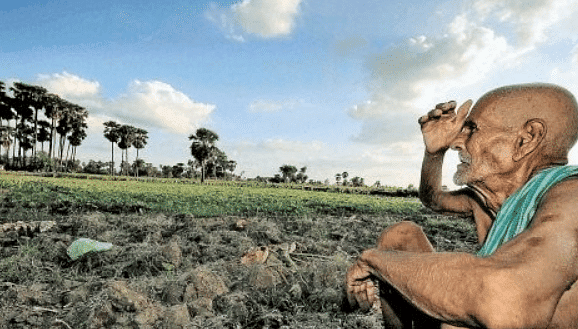
- The central slogan, "nij khamare dhan tolo," emphasized sharecroppers taking the paddy to their threshing floor rather than the jotedar’s house, aiming to enforce tebhaga.
- The movement primarily centered in north Bengal, particularly among the Rajbanshis—a low caste of tribal origin.
- Muslims also actively participated in large numbers.
- The movement dissipated swiftly due to the League ministry's introduction of the Bargardari Bill, heightened repression, the Hindu Mahasabha’s agitation for a separate Bengal, and renewed riots in Calcutta.
- These factors collectively undermined the prospects of receiving sympathetic support from urban sections.
Telangana Movement
- Peasant guerrilla war unfolded in 3000 villages, impacting 3 million people in Hyderabad, led by Asajahi Nizams, characterized by religious-linguistic domination.
- Urdu-speaking Muslim elite ruled over predominantly Hindu-Telugu, Marathi, and Kannada-speaking groups, resulting in a total lack of political and civil liberties.
- Extreme forced exploitation by landlords (deshmukhs, jagirdars, doras) involved forced labor (vethi) and illegal exactions.
- Communist-led guerrillas and Andhra Mahasabha established a strong base in Telangana villages, leading struggles on wartime exactions, rationing abuse, excessive rent, and vethi.
- The uprising began in July 1946, spreading to Warangal and Khammam; peasants organized into village sanghams, using lathis, stone slings, and chili powder in attacks and facing brutal repression.
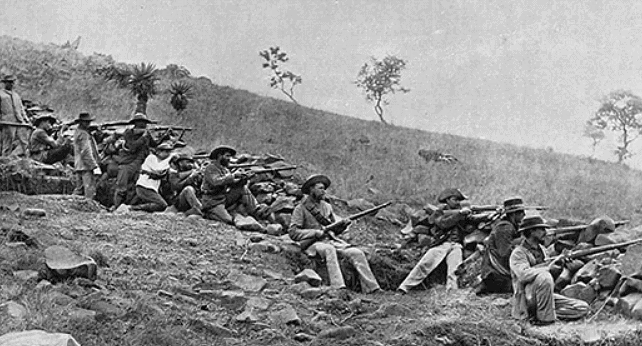 Guerilla Warfare
Guerilla Warfare
- Movement peaked between August 1947 and September 1948, resulting in the defeat of the Razaqars—the Nizam’s stormtroopers.
- After Indian security forces took over Hyderabad, the movement gradually lost momentum.
- Positive achievements included the disappearance of forced labor, increased agricultural wages, restored lands, improved irrigation, and better conditions for women.
- The autocratic-feudal regime of India’s largest princely state was disrupted, leading to the formation of Andhra Pradesh on linguistic lines, aligning with national movement goals.
Balance-Sheet of Peasant Movements
- The catalyst for post-independence agrarian reforms, was exemplified by zamindari abolition.
- Substantial impact on diminishing the power of the landed class.
- Integral role in the broader transformation of the agrarian structure.
- Ideologically rooted in nationalism.
- Consistent nature observed across diverse regions.
FAQs on Spectrum Summary: Peasant Movements 1857-1947 - UPSC
| 1. What were the main weaknesses of peasant movements under colonialism? |  |
| 2. How did the nature of peasant movements change after the 1857 uprising? |  |
| 3. What were some of the key peasant movements in different provinces of colonial India? |  |
| 4. What were the major changes in peasant movements during the post-war phase? |  |
| 5. What is the overall assessment of peasant movements during the period of 1857-1947? |  |



















